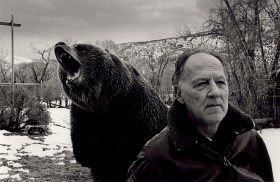


Marshall Curry: Point and Shoot
En instruktør, som interesserer arrangørerne af Academy Award og Sundance og publikum ved Tribeca gennem otte år, hvis seneste film, “Point and Shoot” var åbningsfilm netop på Tribeca 2014, skal selvfølgelig interessere mig, selv om Dokumanias synopsis burde skræmme mig langt væk. Redaktionens valg at vise filmen har min hele anerkendelse, og jeg skal nok se med på DR2 tirsdag aften klokken 20:45, men af andre nysgerrige årsager. Imidlertid, redaktøren skriver denne snopsis i nyhedsbrevet:
“Matt Van Dyke levede et småkedeligt og isoleret liv i sine forældres kælder i Baltimore. For at sætte gang i sit liv kastede han som 29-årig sig ud i det han mente ville være den ultimative manddomsprøve: at indspille sin helt egen rejseeventyrsfilm. Eventyret gennem Nordafrika og Mellemøsten tager dog en uventet drejning i Libyen, da Matt for første gang i sit liv får nogle tætte venner. Da oprøret så småt bryder ud i landet i begyndelsen af 2011, slutter Matt sig til sine nye kammerater i kampen mod diktatoren Gadaffi. Med et våben i den ene hånd og et kamera i den anden kæmpede og filmede Matt krigen, indtil han blev taget til fange af Gaddafis styrker og holdt i isolation i seks måneder. Det lykkedes Matt Van Dyke at flygte fra fængslet i slutningen af august 2011, to måneder før Gaddafis død.”
Jeg fornemmer, at redaktøren lige forstærker teksten med dette afsnit sat ind: ”Dokumania: ’Skyd for at dræbe!’ (den danske titel, sic transit… tænker jeg) er spækket med vilde og unikke optagelser fra Matt Van Dykes rejse. Under hele turen er han nemlig meget bevidst om at holde kameraet kørende, og bruger endda lang tid på at opstille skud, for at få de flotteste optagelser til sin film.” Og understreger med slutbemærkningen: ” Du kan se de vilde optagelser fra den intense dokumentarfilm på tirsdag kl. 20.45 på DR2! Rigtig god fornøjelse!” Og jeg svarer for mig selv: tusind tak, det skal jeg nok.
USA 2014, 82 min.
